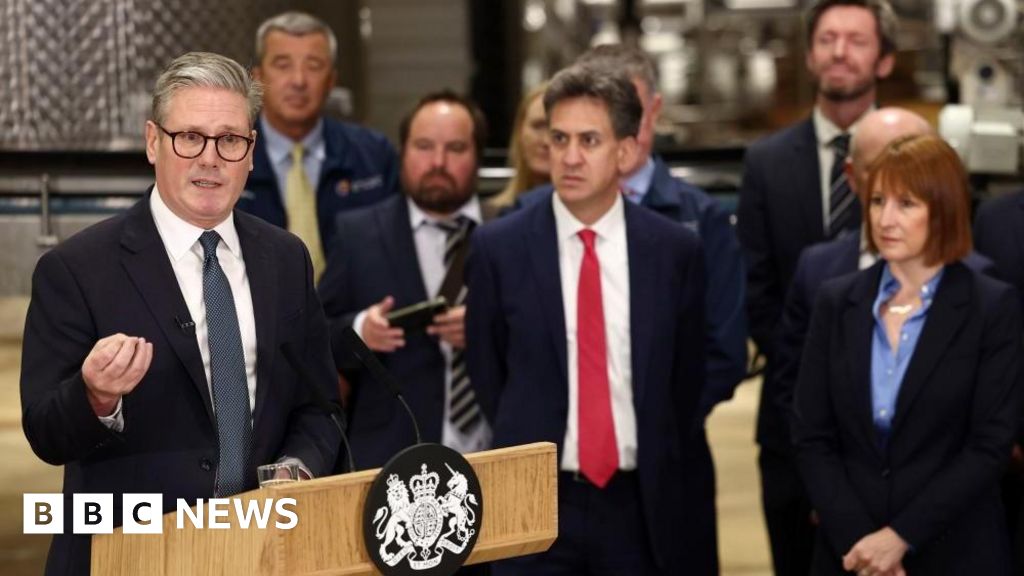There is a lot of rousing rhetoric today about carbon capture, following the government’s pledge of £21.7bn of public funds over the next 25 years to help kick-start the industry in the UK.
It says it will reignite the country’s industrial heartland and help to create a new era for clean energy.
But how much will this help the UK’s efforts to tackle climate change – and is it worth the huge price tag?
Carbon capture and storage is where carbon dioxide (CO2) produced from power stations and industrial processes is captured at source, rather than escaping into the atmosphere and adding to global warming.
The captured CO2 is then transported and stored, often deep underground.
This is slightly different to carbon removal, which involves using the natural world – such as tree planting – or machines, in order to suck out CO2 that is already in the air, and store it.
Carbon capture and storage technology has been around for decades, but the industry has struggled to really take off – both globally and in the UK.
Around 45 commercial carbon capture and storage facilities are in operation worldwide, together capturing more than 50 million tonnes of CO2 each year, according to the International Energy Agency.
That may sound a lot – but global CO2 emissions from fossil fuels and industry currently sit at more than 35 billion tonnes per year.
So carbon capture currently makes very little difference to global CO2 emissions.
But both the UN’s Intergovernmental Panel on Climate Change and the UK’s Climate Change Committee see the technology as part of efforts to reach net zero.
Why?
Put simply, the UK will continue to rely on polluting industries in the decades to come, albeit to a much lesser extent.
As electricity generation from renewable sources such as wind and solar continues to grow, the UK’s reliance on fossil fuels should fall sharply for things like powering cars and heating homes.
But a small amount of gas generation will likely still be needed by 2035, the Climate Change Committee says, in order to help keep the lights on when intermittent renewable sources dip.
Carbon capture would help to prevent this CO2 from escaping into the atmosphere.
The technology could be particularly important for decarbonising some heavy industry such as cement production, for which there are currently few obvious alternatives.
Many environmental groups support carbon capture for this purpose, but have expressed fears that it could give oil and gas companies an excuse to keep burning fossil fuels if not properly controlled.
The International Energy Agency expects carbon capture to grow substantially over the next few years – potentially to around 435 million tonnes per year globally by 2030, based on announced projects.
The UK has favourable geology to store CO2 in the North Sea, as well as a workforce with many of the necessary skills from oil and gas industry.
So the government – much like the previous Conservative administration – wants the UK to be a leader in the carbon capture race.
It hopes that its £21.7bn of funding – plus £8bn from private investment – will help to kick-start the industry in the UK.
The money covers three carbon capture projects and two transport and storage projects, across sites in Merseyside and Teesside.
The government hopes these funds will help overcome the fundamental economic – rather than technological – challenge of carbon capture to date: that it has been cheaper for companies to emit the CO2 into the atmosphere.
It says it will incentivise companies to capture the CO2, with penalties for not doing so.
“Over time the carbon price will inevitably rise,” Ed Miliband, energy security and net zero secretary, told BBC News, referring to the charges to polluters.
“But for now, what the right thing to do is, is to say ‘we are going to help these companies to capture the carbon, give them a way through’, and it is so important for the competitiveness of our industry.”
In March 2023, the Conservatives pledged £20bn in funding over the next 20 years.
But Labour argue they did not make this funding available, nor identify where it was going to come from.
The aim is for these initial projects to start capturing and storing CO2 from 2028, with a capacity to take up 8.5 million tonnes per year.
This would still be a small fraction of the UK’s greenhouse gas emissions, which in 2023 were 384 million tonnes of CO2-equivalent, according to provisional figures.
This underlines how carbon capture will be only one element of decarbonisation.
But the government hopes this initial investment will help carbon capture to become cheaper in time – in a similar way to wind and solar power generation – and help the UK to reach net zero, while also securing jobs and investment.

